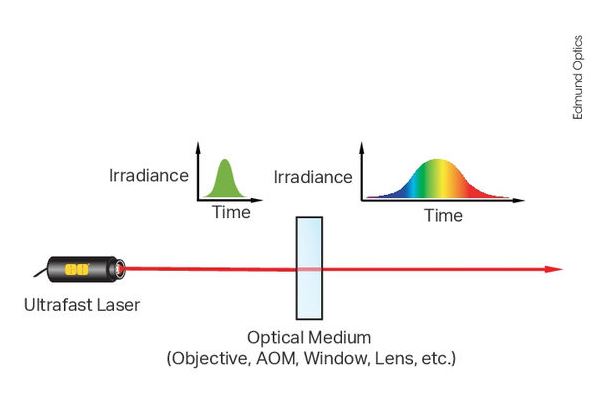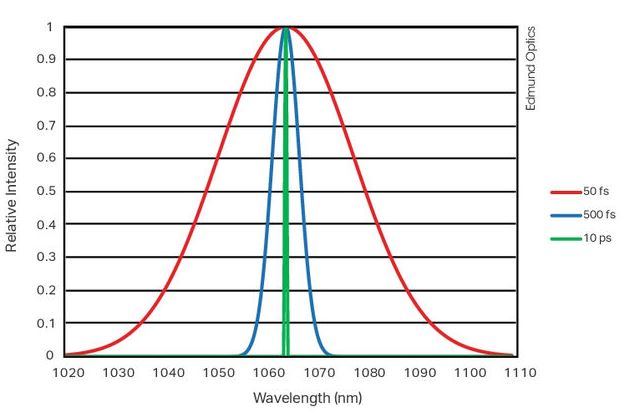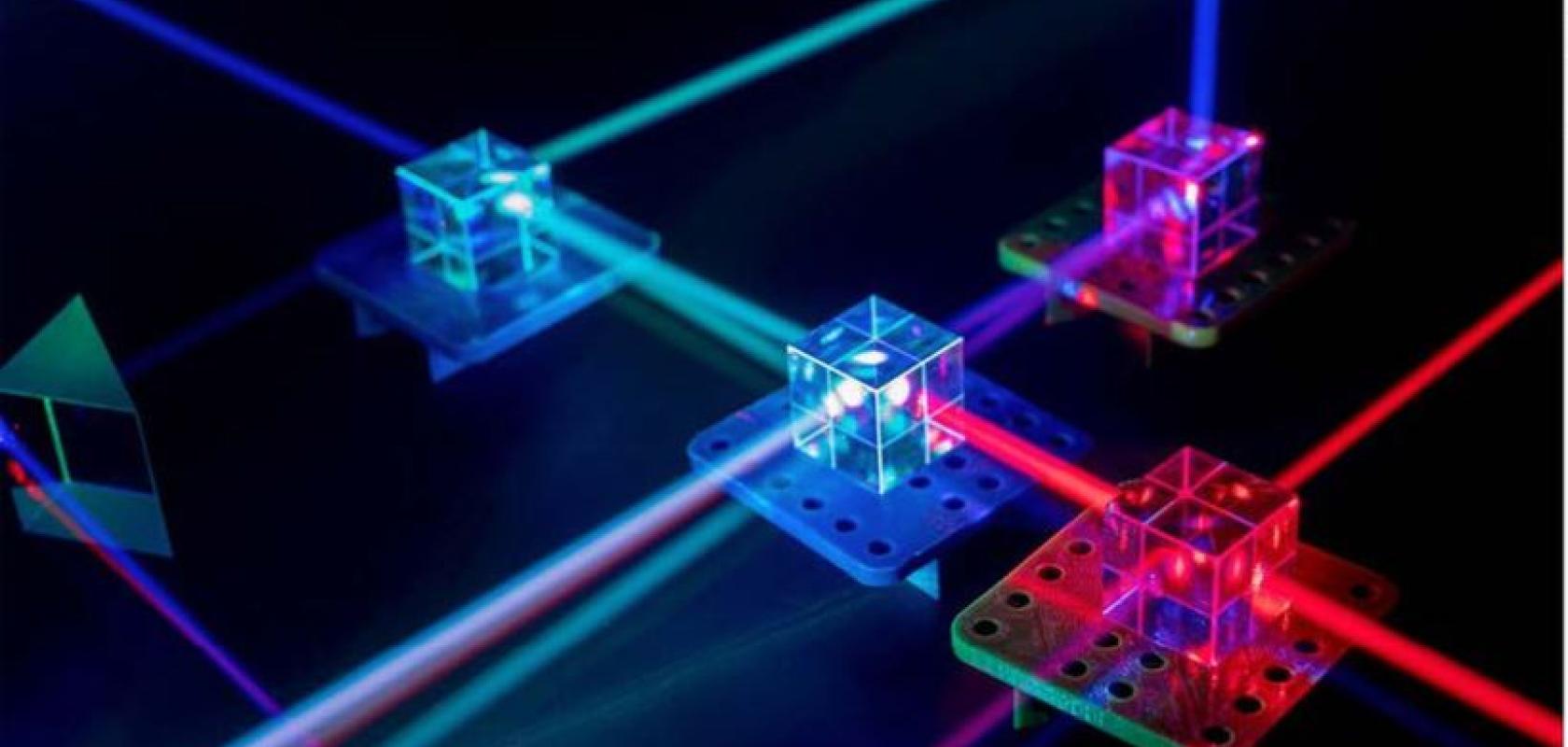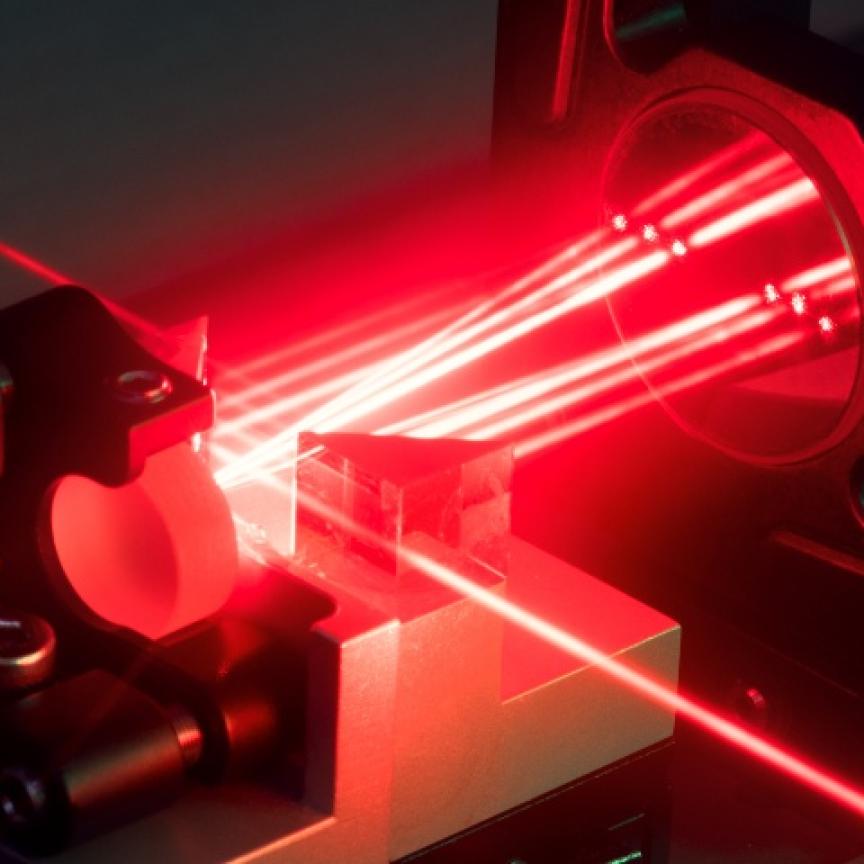Ultrafast lasers have been used in research and academia for more than two decades, but for commercial applications they are just beginning to make an impact. This is predominantly in the fields of materials processing, spectroscopy, and in the biomedical industry.
Benefits such as high precision over small features and less heat generation, mean that ultrafast lasers are starting to be developed for further commercial applications, such as welding, glass cutting and 3D printing.
‘[These applications] are maturing and getting to a point where [they are becoming] commercialised,’ said Tony Karam, laser optics product line manager at Edmund Optics, adding that there is still work to be done in determining the best performance between the varying wavelengths and pulse durations.
One of the largest challenges associated with specifying optics for ultrafast lasers – where pulse durations are picoseconds or shorter – is the potential for side-effects, such as dispersion and laser damage, which could critically affect the quality of the beam and system performance.
‘There is something we call group delay dispersion (GDD) that we have to specify for every optic. That’s because these ultrafast optics are typically broadband, and they have to be broadband because of the known uncertainty principle,’ explained Karam. ‘Because of this principle, the shorter the pulse duration, the broader the pulse is going to be.’
Ultrafast pulses are generated through the combination of a large number of modes or wavelengths coherently emitted, Karam said. ‘That’s called mode locking’.
Ultrafast pulses are broadband and the refractive index of the material is wavelength dependent, Karam explained. When the pulse travels through optical materials, the wavelength dependency of the refractive index in these materials will affect the dispersion of the pulse, and hence the pulse duration. Optics engineers use a term called group delay (GD), which is the derivative of the spectral phase, explained Karam. The group delay dispersion is a derivative of the group delay.
Karam stressed the importance of designing and characterising optics for a certain optic GD value. These values can differ depending on whether the optics are used for beam transport of for pulse compression. ‘The optics used for a beam transport are a simpler case where the GD just needs to be around zero for the wavelength range of the pulse. With the compressive optics – the optics that are used to compress a pulse and make it shorter in time – these would need a GDD that has negative values over a certain pulse duration,’ Karam explained. ‘So, now there are these two different types of dispersions that define which optics to use with ultrafast.’

How positive dispersion affects a broadband ultrafast source
'Ultrafast optics are important'
Emphasising the importance of specifying optics, Daniel Adams, product marketing manager at Edmund Optics, said: ‘The key thing is that when you’re talking about lasers and the ultrafast regime, you absolutely cannot use normal optical components. It either won’t work for very long or it’ll destroy the pulse you’re trying to use. You’ve worked so hard to create this ultrafast pulse; often these ultrafast laser systems can be really expensive, and you’ve generated this really short pulse with this really high peak power that you can use for lots of applications.
‘But if you put a standard optic in front of it, you’re going to lose so much of that value. Ultrafast optics are important, we use them to preserve the properties of the ultrafast laser or correct for any spreading out of the pulse that’s happened between where the laser was generated and where it exits the laser body.’
Cost is also an important consideration, as Karam explained: ‘It costs quite a bit to generate these pulses or to buy a laser with ultrafast or femtosecond pulses. If the optics are not chosen properly with proper GDD, that can be costly for the user and micromachining or research or any other application, because it can disperse the pulse.’ A 100fs or 50fs pulse can become a picosecond pulse using the wrong optics, Karam said. ‘That could be very costly in the long run, both as far as performance and as far as a longer-generation pulse laser would have cost less to purchase than a very short pulse laser.’
How optics control dispersion effects in ultrafast lasers
Controlling dispersion effects is a key role of the optics used in ultrafast lasers, Karam said: ‘There are two types of mirrors or optics. There are those with controlled group dispersion, which is near-zero GDD that could be used for beam transport. The purpose of these optics is to transport the beam or steer it in optical set-up without causing any dispersion to the pulse.’
Edmund Optics is working on several types of transport optics, from low GDD mirrors, to antireflection coatings with controlled dispersion, or controlled GDD beam splitters and low GDD lenses.
The other type of ultrafast optic is those with negative GDD. One example is high dispersive mirrors, where a negative GDD is advantageous for pulse compression. Here the GDD is highly negative – negative 500, negative 1,000 femtosecond squared over a large bandwidth, for example. There is also very high reflectance, so around 99.9 and higher, which could lead to lower losses in the system or in the compressor, Karam said.

Bandwidth is inversely proportional to pulse duration
According to Edmund Optics, of utmost importance for manufacturers of ultrafast optics, in terms of getting it right, is the measurement stage. Adams explained: ‘Because this is a new field commercially, we found, looking at the market, that a lot of ultrafast optics available are not actually meeting the published specifications, just because people are not measuring them properly when manufacturing them and they’re not available.’
Attosecond pulses 'pushing for faster and faster'
All optics should be measured using a spectral resolved white light interferometer, according to Karam. ‘Sometimes there can be a high discrepancy between design and measurement. Once we have a GD value that we’re reporting, this is a very accurate value that we are measuring and we know that these optics really work. We make a big point of measuring everything when it comes to laser optics, making sure we have the right metrology in place so that we can deliver what we specify.’
Looking to the future, Karam believes there is scope for continued development. ‘I’d say because of the scientific research, there were a lot of advances in ultrafast. The industrial research or the industrial applications matured very fast. But there’s still some work there, and people are actively working on making improvements.’
On whether ultrafast pulses will continue to get shorter, Karam thinks this will certainly be the case, at least in academia and research. ‘Depending on the research, you have this entire field of attosecond pulses. They are already pushing for faster and faster. There are visible attosecond pulses with wavelengths ranging about two octaves, so there is a lot of really interesting work being done there.’
Attosecond pulses have a different purpose, to look at electron dynamics or to image electron movement. However, Karam said that, in commercial micro processing or 3D printing applications, it’s going to be the femtosecond regime for a while.


